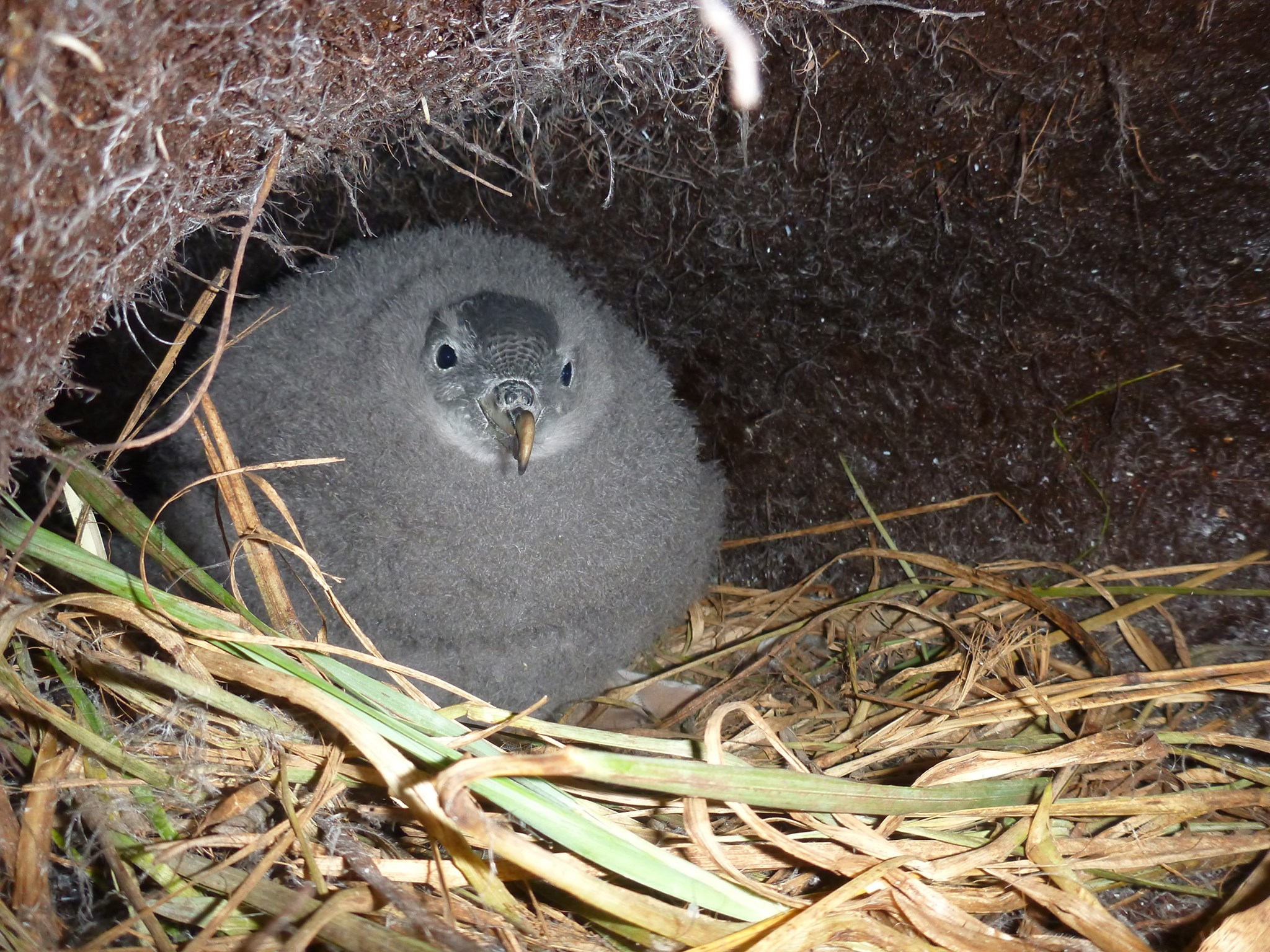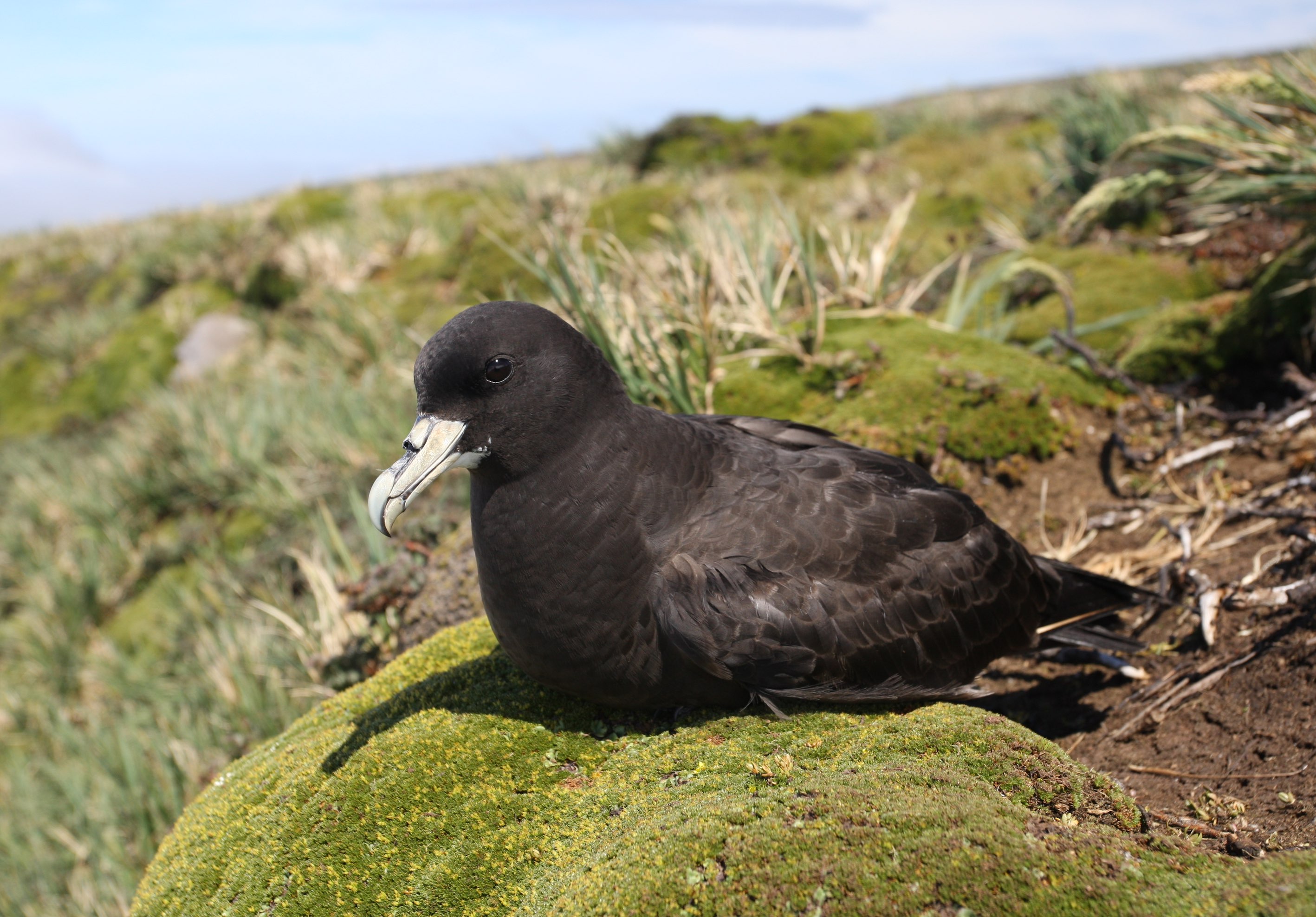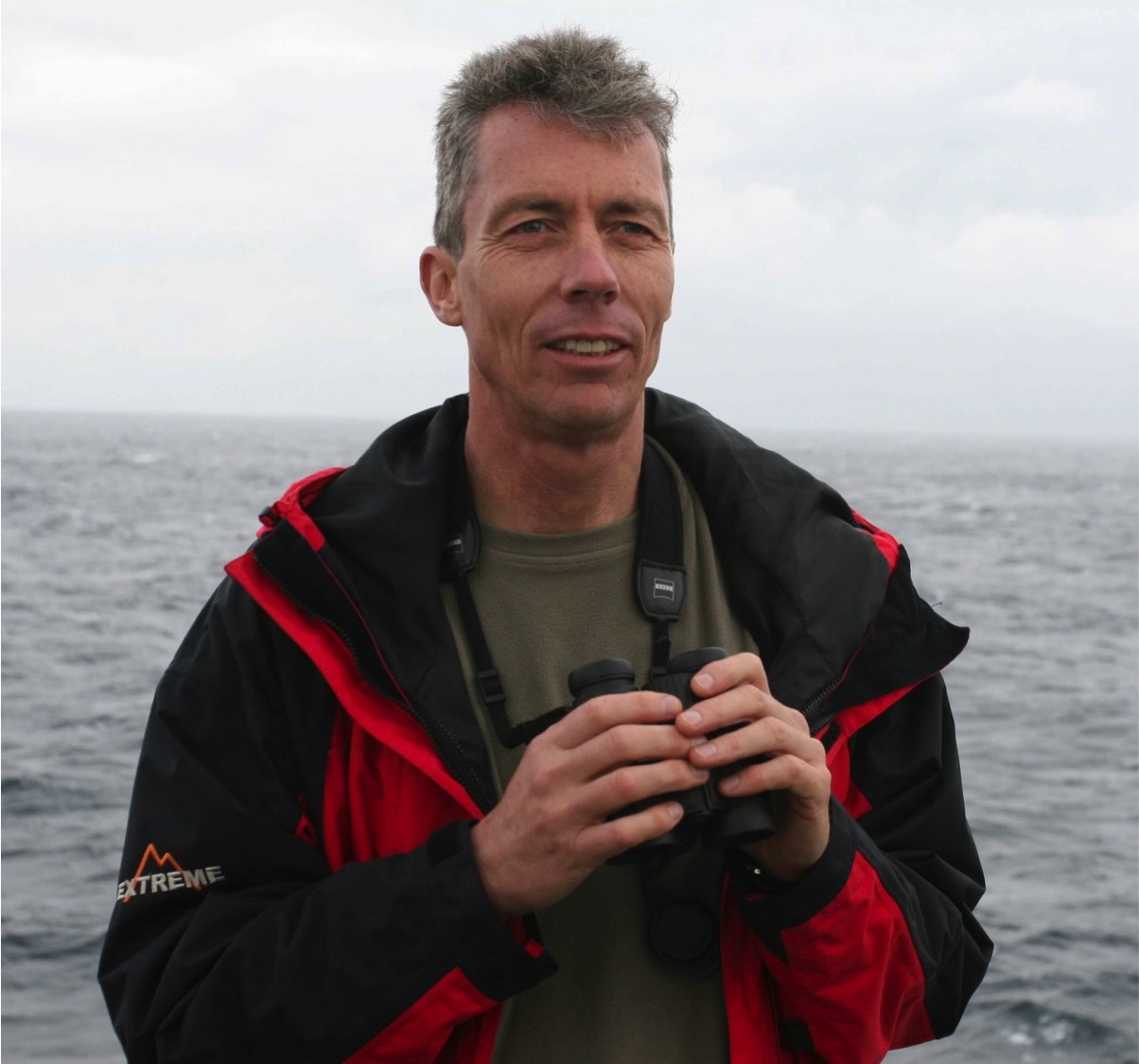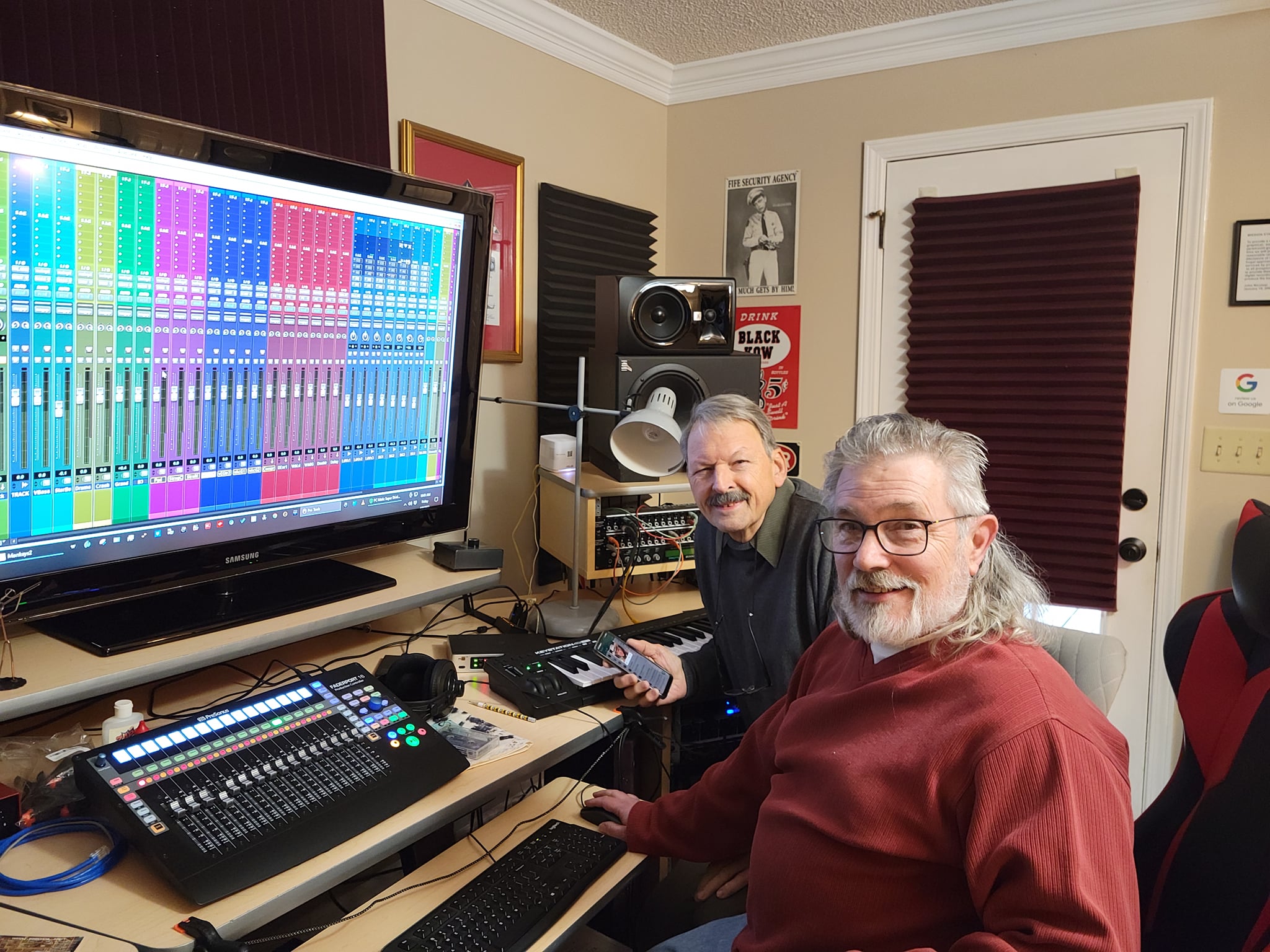
A Grey Petrel chick starts to shed its down on Macquarie Island; photograph by ‘Jez’ Bird
Jeremy ‘Jez’ Bird (School of Biological Sciences, University of Queensland, St Lucia, Australia) and colleagues have published open access in the journal Ecography on estimating populations of burrowing seabirds ion Australia’s Macquarie Island, including that of the ACAP-listed and Near Threatened Grey Petrel Procellaria cinerea. “Species [such as the Grey Petrel] with low abundance that occur patchily across large islands are likely to be best estimated using targeted surveys …”.

Steep! ‘Jez’ Bird surveys burrowing petrels on Macquarie Island; photograph by Melissa Houghton
The paper’s abstract follows:
“Maximising survey efficiency can help reduce the tradeoff between spending limited conservation resources on identifying population changes and responding to those changes through management. Burrow-nesting seabirds are particularly challenging to survey because nests cannot be counted directly. We evaluated a stratified random survey design for generating unbiased population estimates simultaneously for four petrel species nesting on Macquarie Island, Australia, where the survey cue, burrow entrances, is similar for all species. We also compared the use of design-based and model-based analyses for minimising uncertainty in estimates. We recorded 2845 Antarctic prion burrows, 306 white-headed petrel burrows and two blue petrel burrows while distance-sampling along 154 km of transects. For blue petrels and grey petrels, we completed nocturnal searches along a further 71 km and searched 249 km of tracks during follow-up ground searches. We failed to generate unbiased population estimates for two rare and localised species, blue and grey petrels, from our stratified random survey. Only for the most widespread and abundant species, Antarctic prion, did the estimate have reasonable power to detect a rapid population change. Model-based analyses of the stratified random survey data did not improve upon traditional design-based analyses in terms of uncertainty in population estimates, but they did provide useful spatial representation of current populations. Models that used the targeted survey data did not reflect current population sizes and distributions of the two rare and localised species. We found that when species ecologies, distributions and abundances vary, a multi-method approach to surveys is needed. Species with low abundance that occur patchily across large islands are likely to be best estimated using targeted surveys, whereas widespread and abundant species can be accurately and precisely estimated from randomised surveys using informative model-based analyses.”
Read Jez Bird’s photo essay for the Grey Petrels of ‘Macca’ here.
With thanks to Jeremy Bird and Justine Shaw.
Reference:
Bird, J., Terauds, A., Fuller, R.A., Pascoe, P.P., Travers, T.D., McInnes, J.C., Alderman, R. & Shaw, J.D. 2022. Generating unbiased estimates of burrowing seabird populations. Ecography doi: 10.1111/ecog.06204.
John Cooper, ACAP Information Officer, 02 May 2022

 English
English  Français
Français  Español
Español 











